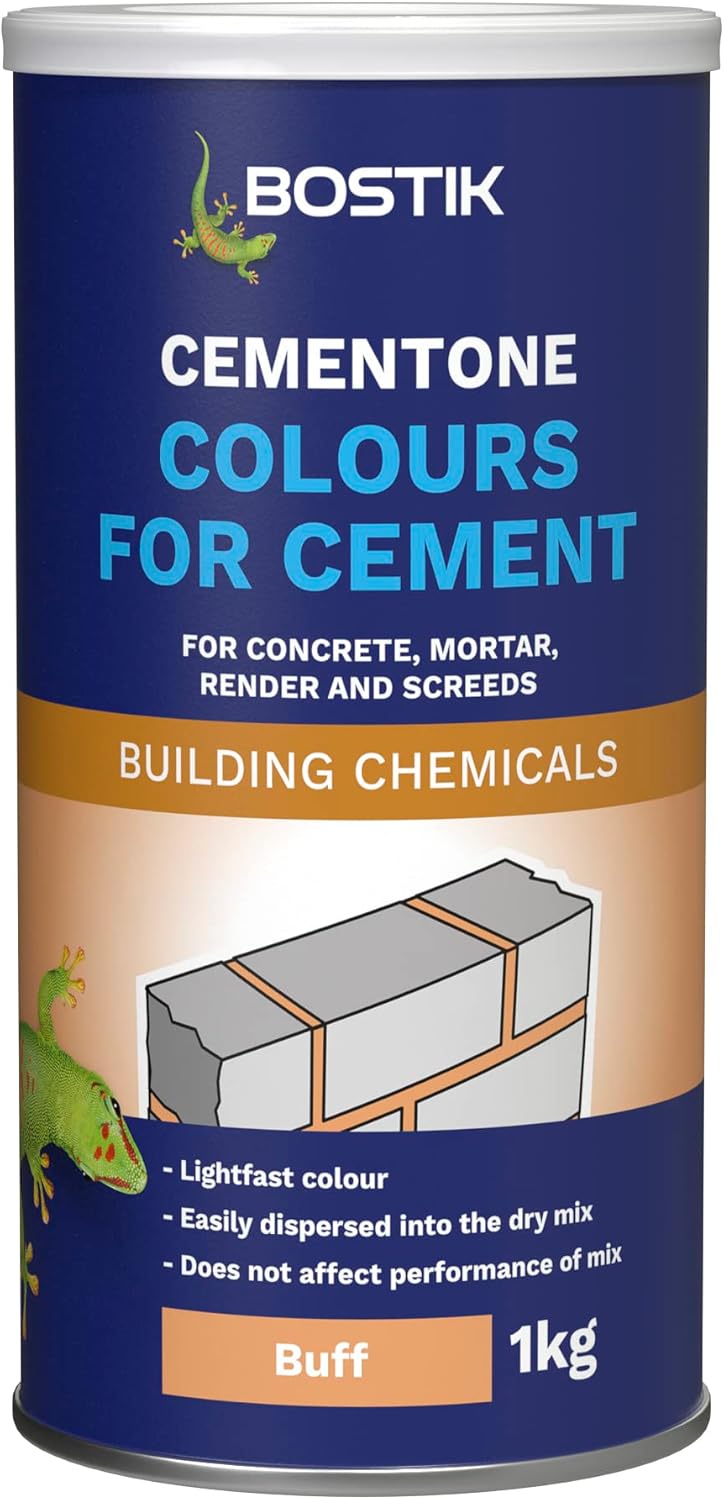About this deal
Our cement plasticiser range includes Bond It’s Water-Resistant Plasticiser which improves the workability of concrete and mortar in its wet state whilst also doubling as a cement waterproofer. The Sealoproof Cement Waterproofer creates a durable waterproof finish while also acting as a cement and render retarder to slow down the setting process, whilst Sealomix’s Mortar Plasticiser supplies added strength to concrete and adds frost-resistance against freezing and thawing. Now, pour your sand solution gently over the top. The tights will act as a sieve, allowing the remaining water/acid solution to drain off, leaving you with just your sand. Mortar tints, however are slightly different in that they tend to come in concentrated liquid form that you then dilute to a point until you get a colour match. This may take a day or so but you will need to be patient as each one needs to be fully dried to get an exact colour. Similar to the way in which lime can significantly lighten the colour of mortar, as you may imagine, using white cement has the same effect.
Firstly, start with a 3:1 mix (3 sand to 1 cement) and then a 3½:1 (3½ sand to 1 cement), then a 4:1 mix (4 sand to 1 cement), then a 4½:1 mix (4½ sand to 1 cement) and so on, all the way up to a 6:1 mix. When it comes to lime, traditionally, this would have been used in place of cement as it does exactly the same job e.g. binds materials together, but it also has the added benefit of making a mortar mix breathable and more flexible. Some mortars are artificially coloured with a cement dye or mortar tone. This makes the permutations endless as you not only have to think about the sand and cement that was used but also what dye was used! Now pour some clean, fresh water into both the containers. This will help to dilute the remaining acid in both, making it weaker and less hazardous. Put a lid on the container with your waste acid and put this to one side for now. Step 6 – Drain off Sand Solution As we have mentioned, as the sand used in a mix makes up the bulk of the actual mix itself, it has the greatest effect on the overall colour, so to get a good match, it’s really essential to identify it.So as you can see, not only does the colour and type of the sand that used in a mortar mix affect its colour but so does the cement and the presence of lime if it has been used. How do I Know What Colour Sand was Used in the Original Mortar? If you cannot locate the sand then talk to the builders merchants and even the local quarry to find out how many local building sands there are available.
The next part is a waiting game! You will need to leave the solution for 2-3 days for the Muratic Acid to get to work on the on the cement and dissolve it (and also any lime that may also be present). In this project guide we go through what’s involved with matching mortar colours, read on to find out how. Why Match Mortar Colours?
This is easy enough to do but does involve a little time and patience as you will need to create a range of different mixes using different ratios of cement to sand. Accelerators help to speed up the setting and hardening process of cement and mortar, whilst retarders slow it down. If you’re looking for a concrete waterproofer additive, many of our accelerators, retarders and plasticisers include waterproofing and frost-proofing qualities as an added benefit.
As we have established, the colour and tone of the sand that is used in your mortar mix has pretty much the greatest bearing on the overall colour of new mortar. Aside from the techniques we have run through above for extracting sand from the original mortar, which is very effective by the way, you can also undertake some local research.
SEE WHAT WE’RE UP TO
Once your new mortar has dried it will change colour very slightly. This may be even more evident over a large area Now that you know exactly how to create some test mixes and compare to your existing mortar to find a colour match, it’s now just a question of getting it done, but before you make a start there are a few further points to be aware of: From concrete plastisicers and mortar water proofers to cement accelerators, retarders, dyes and everything in between, we’ve got it at Selco.
However, if the mortar is very light in colour then this suggests that either a white cement (aka Snowcrete) or lime has been used.Place the sand on an old sheet/cloth and leave it somewhere out of the way to fully dry off. Once dry, pop it into a clear sealed jar or container. Step 7 – Match the Sample Get in touch with any local historians or custodians of local monuments or historic buildings as it is likely that they will know exactly where the majority of original materials used were sourced from. If it helps, I am looking for the sandy colour that this chap was able to get in his "this is how it turned out" picture (but funnily enough he wanted more grey!): I wonder if I need a different cement, to include lime not snowcrete, a different colour sand? If anyone can help I'd be grateful. If you have read through the above you should now know exactly why mortar can vary in colour and how a fresh mortar mix can be a totally different colour to existing mortar, it’s now time to look at the methods that can be used to actually colour match cement and mortar. Experiment With Different Mortar Mixes and Raw Materials
 Great Deal
Great Deal 